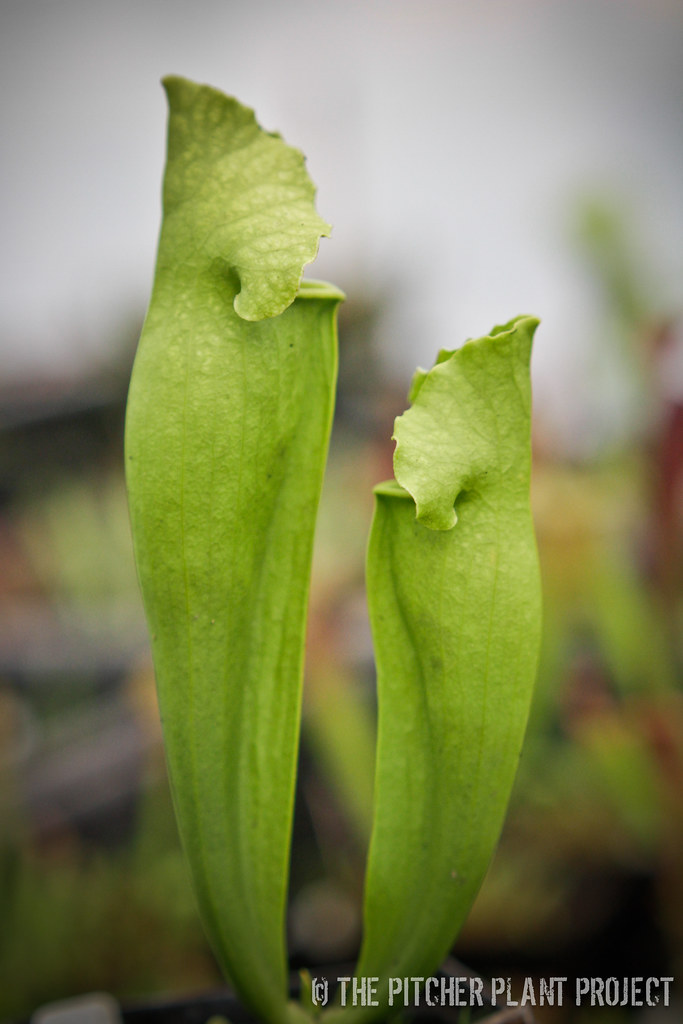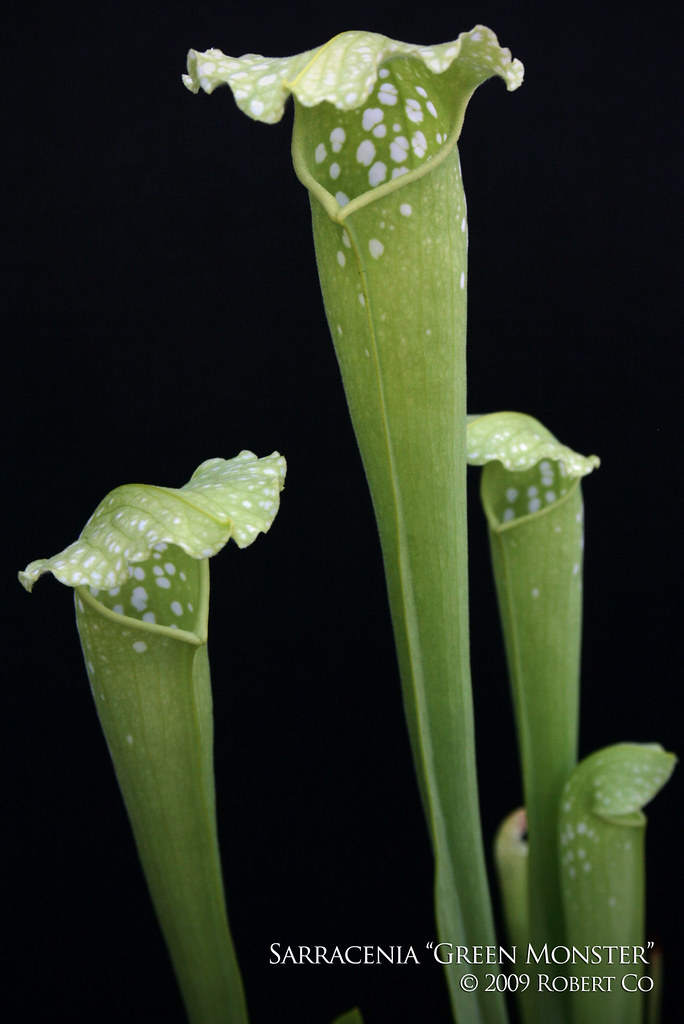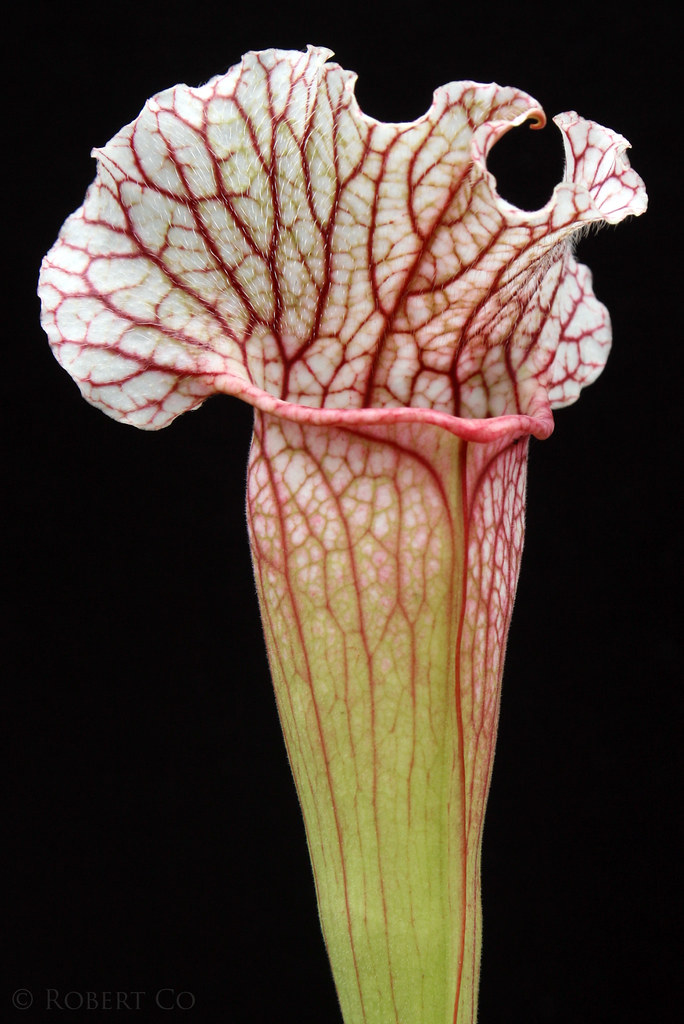 AF Surprise?
AF Surprise?
One of the seedlings I have seems to be turning up as an anthocyanin free seedling. Now, hopefully it’s not because of my lower light levels, but it’s been looking quite AF for the past couple of seasons. Maybe I’ll know more when it flowers, but the way it looks – it is coming up that way. I received seeds from my friend Wes Buckner about 3 or 4 years ago. The cross he did was S. mitchelliana x ‘Leah Wilkerson’.
Now, there could be a few things going on here…
1.) It could be that it’s not really AF but sure looks that way. Yeah, that could be. There’s no red on any damaged portion of the plant though, but we’ll see. Here’s a shot of new growth:

2.) It is a possibility that some other seed may of fallen into that batch. I know Wes – and he is really careful and packages up the seeds and works with the crosses one flower pod / one cross at a time. OC if you will. LOL! (Just kidding Wes, but damn, you really are very organized.) So, could it be possible that *one* seed from some other cross managed to find its way into the package? Sure – it’s a possibility.
3.) I am very careful with my seed sets and also work with one flower / one cross at a time. I keep my work area very clear and clean. I make sure no other seeds are visible before jumping to the next seed batch. Could it also be that some other cross may of fallen into the fray? Maybe.
4.) I am not aware that either the S. mitchelliana or S. ‘Leah Wilkerson’ are AF recessive. The S. mitchelliana used in the cross may have a slight chance of having that AF recessive there, but not sure that it would express itself in this progeny unless maybe there’s something AF going on with S. ‘Leah Wilkerson’ that we don’t know about. (Doubtful, but not ruling it out.) I also believe that other crosses involving AF plants with S. ‘Leah Wilkerson’ have not produced any AF offpsring. So, with that said, could it be an antho free mutant? A conversation with another fellow grower (Hi Adrian!), informed me that he has read somewhere that AF mutations could quite possibly happen 1 or 2 in 50-100,000 plants. Could this plant possibly be one of those mutants freaks? Eh, maybe.
Here’s a couple photos from 7 May, 2011 of the seedling:
 7 May 2011. Here we see the seedling among other plants in the group. It was one of shorter plants, and at first I nearly tossed this one out! I noticed that it was a little different and very bright green compared to the rest of the pot-mates.
7 May 2011. Here we see the seedling among other plants in the group. It was one of shorter plants, and at first I nearly tossed this one out! I noticed that it was a little different and very bright green compared to the rest of the pot-mates.
Now, this year’s colors aren’t as vibrant as I would like, lacking the white in the hood, for example (as explained in my previous post.) The form of the plant is still interesting, and I do admire it. I could only imagine what it would be like once I get more light!
 7 May 2011. One of the select and unusually vigorous clones from this batch.
7 May 2011. One of the select and unusually vigorous clones from this batch.
I don’t have any good photos of the sibling plants this year. I’ll get some photos later on though. This is in part due to the sub par conditions that I’m in… It’s really sad but like I wrote about I am hoping to get that fixed soon.
The pitcher shape of the plant in question slightly reminds me of another similar cross of a S. mitchelliana and moorei: S. mitchelliana x ‘Royal Ruby’. The upright pitcher with a slight bulge at the top and upturned lid is slightly similar to the seedling plant in question.
 Sarracenia mitchelliana x ‘Royal Ruby’, freshly opened.
Sarracenia mitchelliana x ‘Royal Ruby’, freshly opened.
I’d like to think the fourth scenario is what is really happening, but who really knows. Wishful thinking I guess. Some other plant most likely got in there, but again, who knows? It’s a beautiful (yet irritating) uncertainty. A very important lesson to learn from all of this is the importance of keeping clean and organized in all aspects when dealing with seeds, as well as plants! (That is unless you don’t really mind all the unknown plants.) For me, personally, I like to know but won’t throw it away because I don’t know exactly what it is. Anyway, what I know is that I do enjoy this plant and even if I am uncertain about it’s history, I’ll still enjoy and admire it in the present and future!
12 May 2012 UPDATE: Totally forgot about the scenario that Aaron and Lois mentioned in the comments below!
“Assuming the mitch is the pod parent, it’s possible it had the gene and some wayward pollen from another plant got in there. That would depend on how much Wes protects from cross-pollination. With mine outside, I see bumblebees occasionally doing their thing, mainly on the larger flowers.” — Aaron Carlson
“I have seen a mitchelliana F2 that reverted back to looking AF this was only a few in a large batch of seedlings” — Lois Ochs
YES – these are huge possibilities as well!







 [Sarracenia mitchelliana x excellens]
[Sarracenia mitchelliana x excellens]

